Environmental Sound Classification on microcontrollers
Jon Nordby jon@soundsensing.no tinyML Summit 2021
Introduction
Environmental Noise Pollution
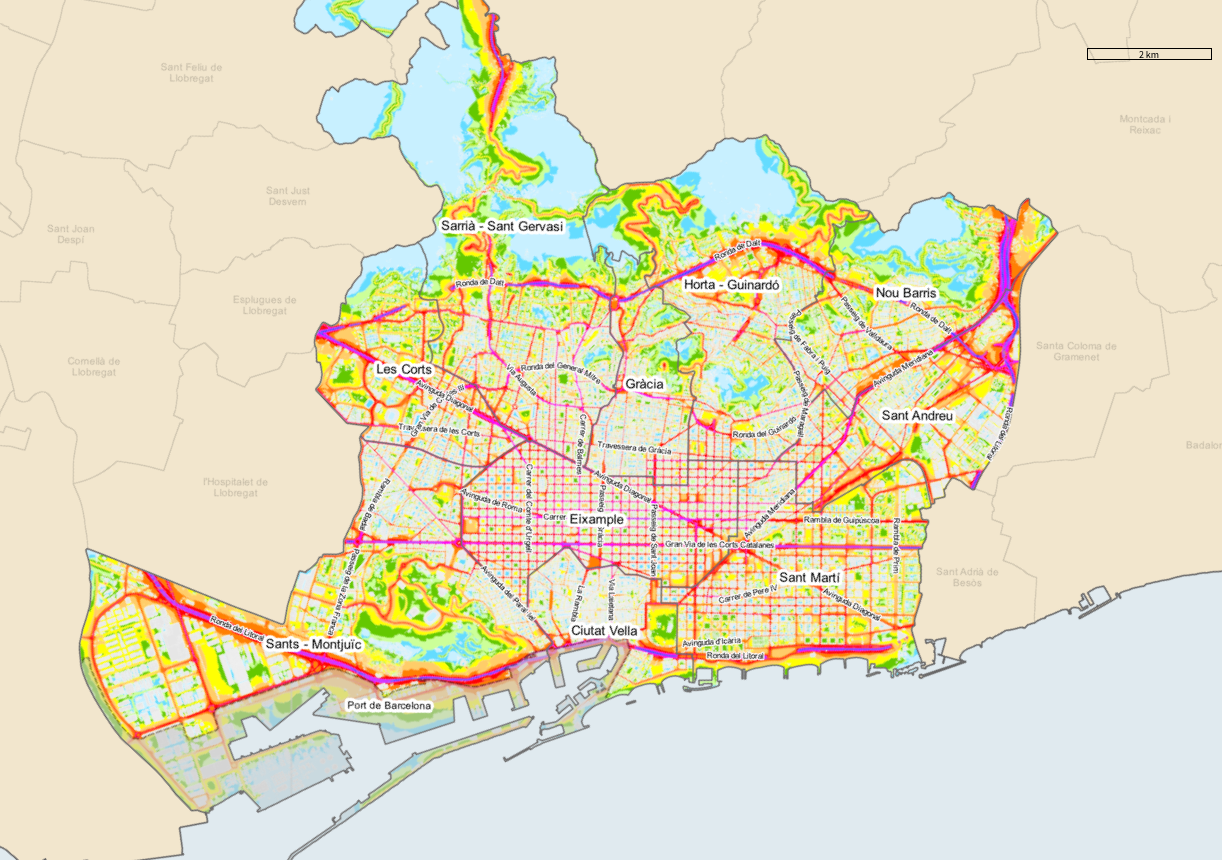
The environmental pollution that affects most people in Europe
- 13 million suffering from sleep disturbance
- 900’000 disability-adjusted life years (DALY) lost
Occupational Noise-induced Hearing Loss

The most prevalent occupational disease in the world
- 40 million affected by hearing loss from work
- 4 million disability-adjusted life years (DALY) lost
Noise Monitoring with Machine Learning

Wireless Audio Sensor Networks
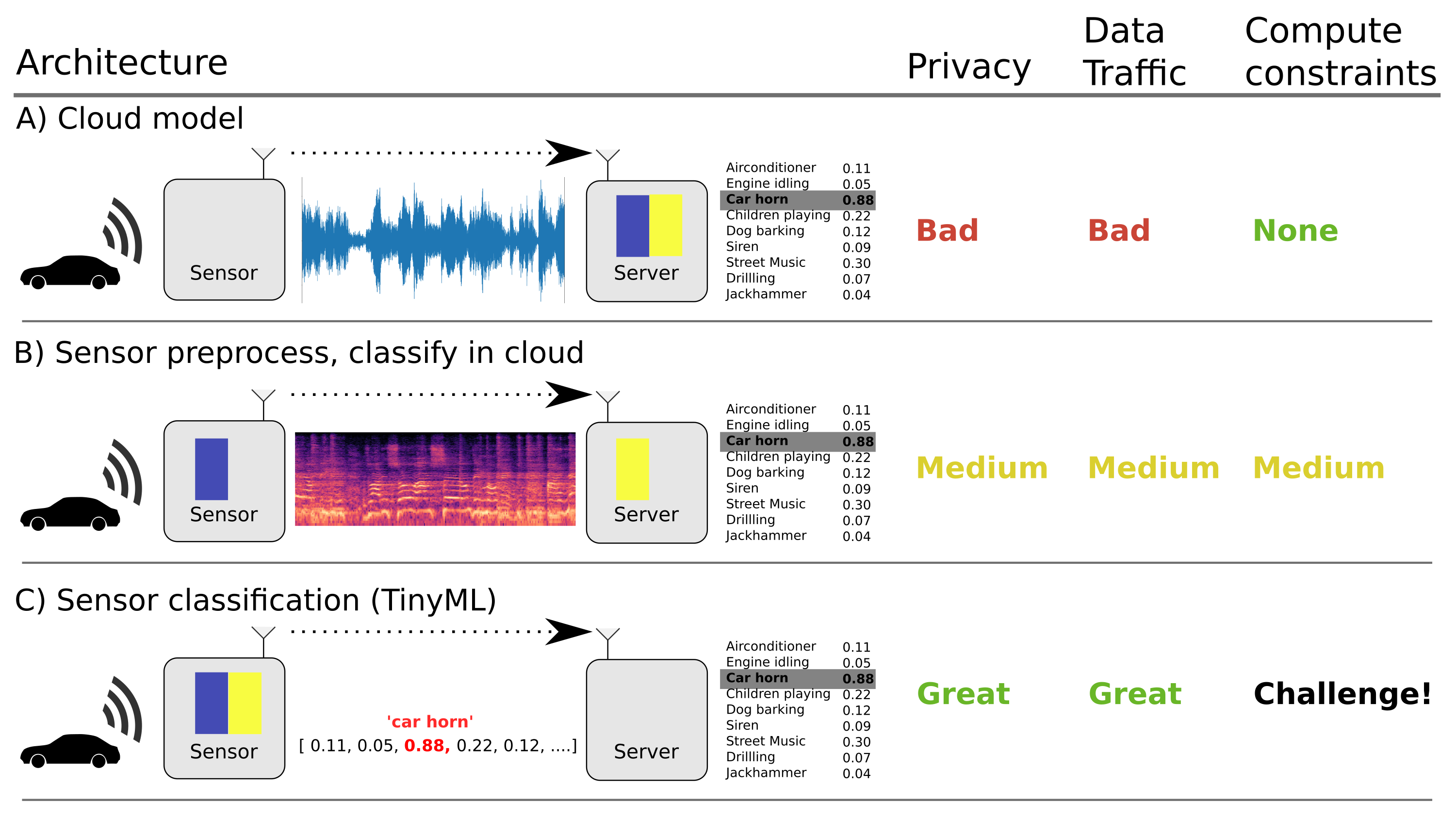
Model Constraints
Example target: STM32L476 microcontroller. With 50% of capacity:
- 64 kB RAM
- 512 kB FLASH memory
- 4.5 M operations/second
Small models Urbansound8K

Shrinking Convolutional Neural Networks for TinyML Audio
How to did we make the model fit on device?
Pipeline
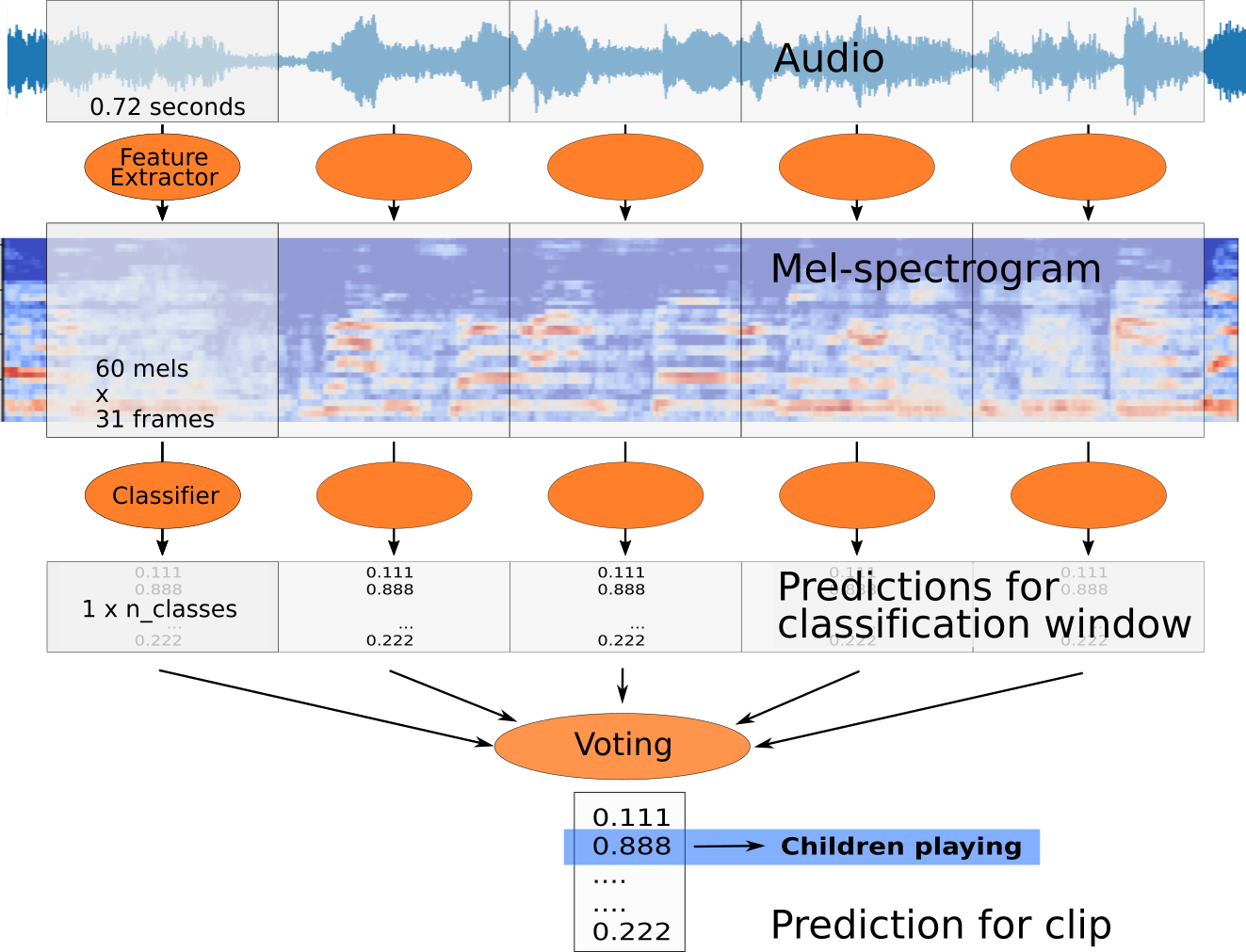
Typical audio pipeline. Spectrogram conversion, CNN on overlapped windows.
Reduce input dimensionality
- Lower sample rate
- Lower frequency range
- Lower frequency resolution
- Lower time duration in window
- Lower time resolution
~10x reduction i compute. And easier to learn!
Reduce overlap

Models in literature use 95% overlap or more. 20x penalty in inference time!
Often small performance benefit. Use 0% (1x) or 50% (2x).
Use a small model!
Depthwise-separable Convolution

MobileNet, “Hello Edge”, AclNet. 3x3 kernel,64 filters: 7.5x speedup
Downsampling using max-pooling
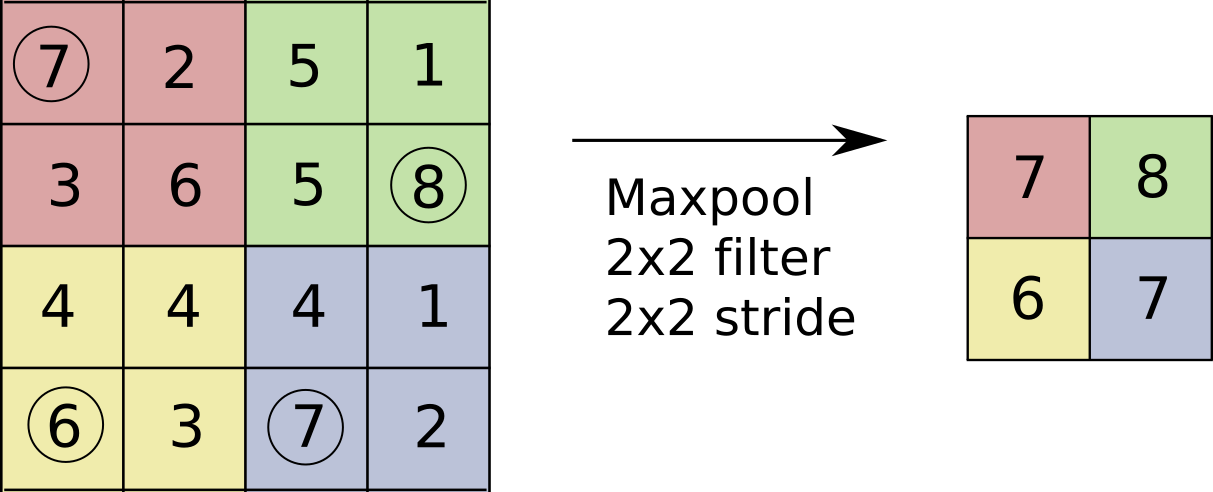
Wasteful? Computing convolutions, then throwing away 3/4 of results!
Downsampling using strided convolution
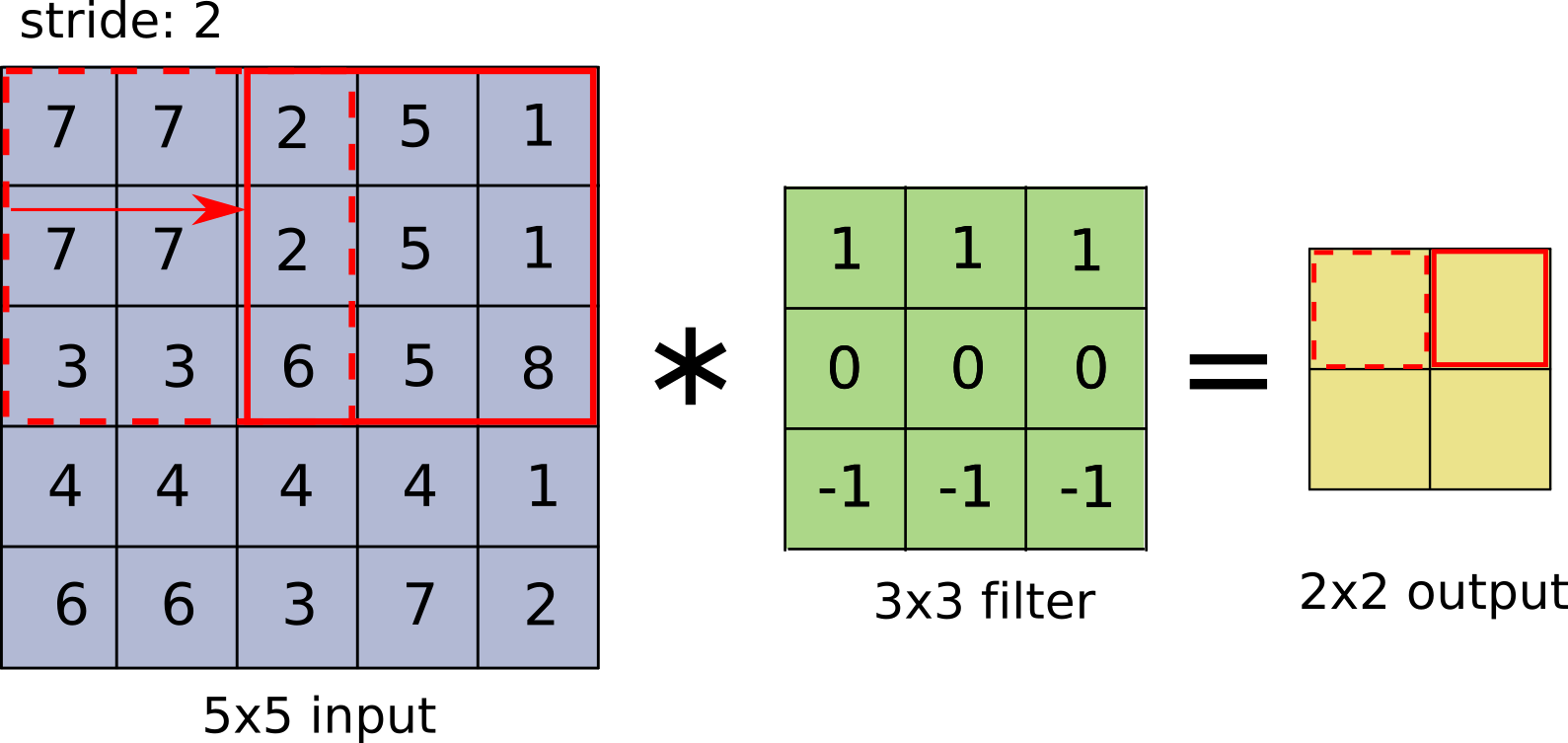
“Learned” downsampling. Striding 2x2: Approx 4x speedup
Quantization
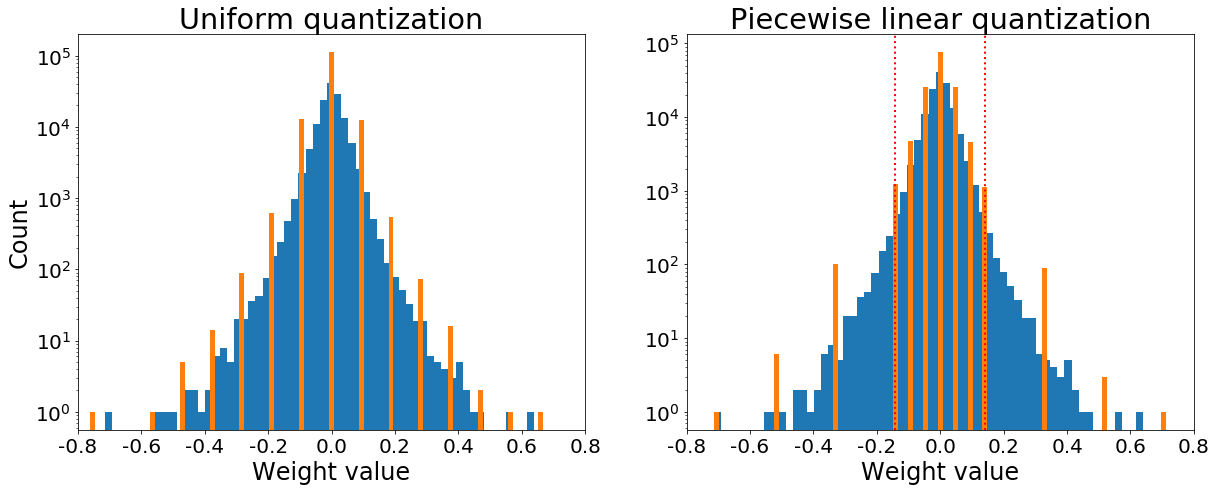
- Using int8 instead of float32.
- 4x improvement in weights (FLASH) and activations (RAM)
- 4.6X improvement in runtime using CMSIS-NN SIMD
Ref “CMSIS-NN: Efficient Neural Network Kernels for ARM Cortex-M CPUs”
Latest developments
- Binary network quantization
- Neural Architecture Search
- Streaming inference
- Learned filterbanks
- Hardware acceleration
- Learned pooling
TinyML very actively researched, rapid improvements
Outro
Noise Monitoring example

- Based on Noise Event Detection & Classification
- Tested successfully at shooting range
- Expanding now to Construction and Industry noise
Condition Monitoring example
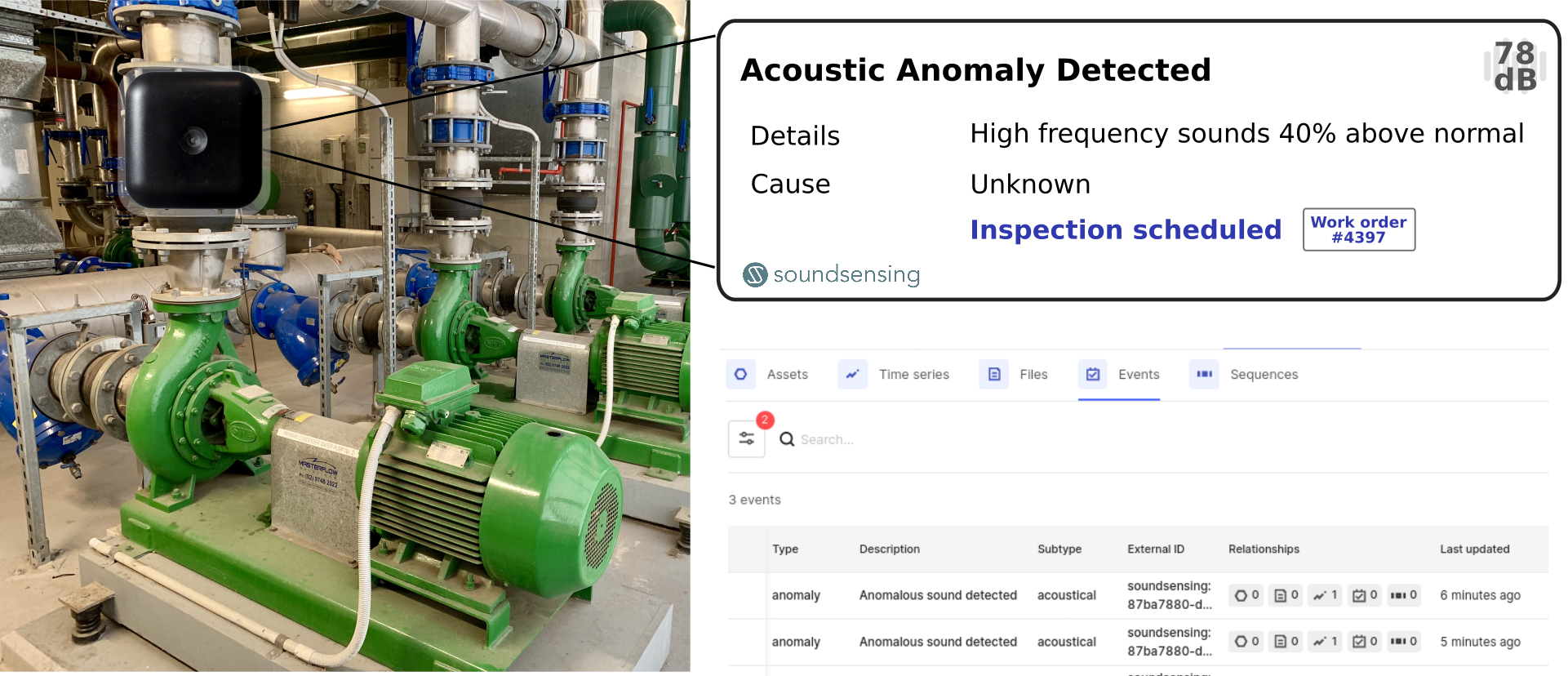
Condition Monitoring of technical equipment using sound. Developed based on experience from Noise Monitoring.
Conclusions
- Audio classification of Environmental Noise can be done directly on sensor
- Made possible with a range of efficient CNN techniques
- Integrated into Soundsensing IoT sensors
- Used for Noise Monitoring & Condition Monitoring
We are open for partners and pilot projects Get in touch! contact@soundsensing.no
Questions ?
TinyML Summit 2021: Environmental Sound Classification on microcontrollers
Jon Nordby jon@soundsensing.no
Bonus
Bonus slides after this point
Thesis results
All the info
Thesis: Environmental Sound Classification on Microcontrollers using Convolutional Neural Networks

All models

Model comparison
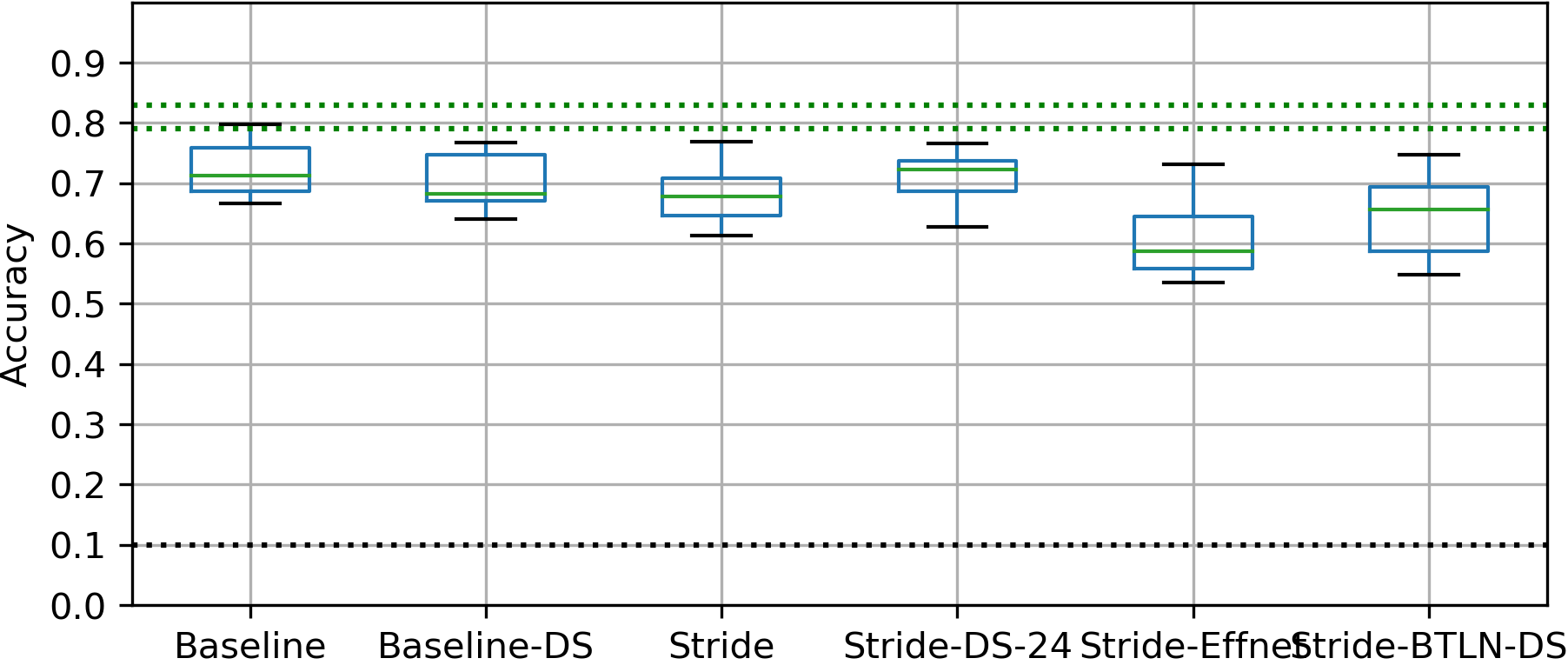
List of results

Confusion
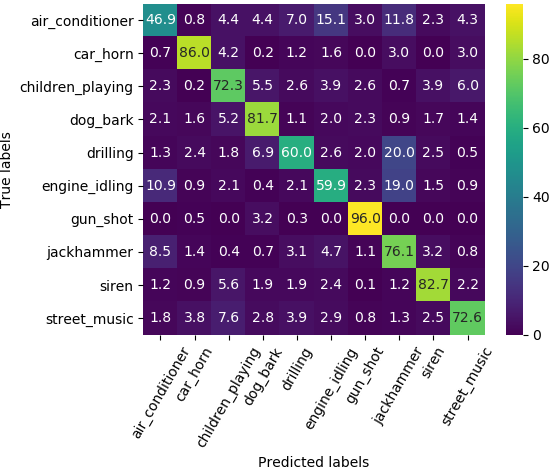
Grouped classification
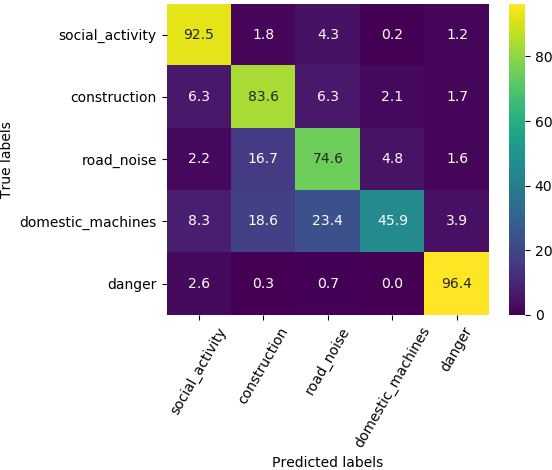
Foreground-only
Unknown class

Thesis Methods
Standard procedure for Urbansound8k
- Classification problem
- 4 second sound clips
- 10 classes
- 10-fold cross-validation, predefined
- Metric: Accuracy
Training settings

Training
- NVidia RTX2060 GPU 6 GB
- 10 models x 10 folds = 100 training jobs
- 100 epochs
- 3 jobs in parallel
- 36 hours total
Evaluation
For each fold of each model
- Select best model based on validation accuracy
- Calculate accuracy on test set
For each model
- Measure CPU time on device
Mel-spectrogram
More resources
Machine Hearing. ML on Audio
Machine Learning for Embedded / IoT
Thesis Report & Code